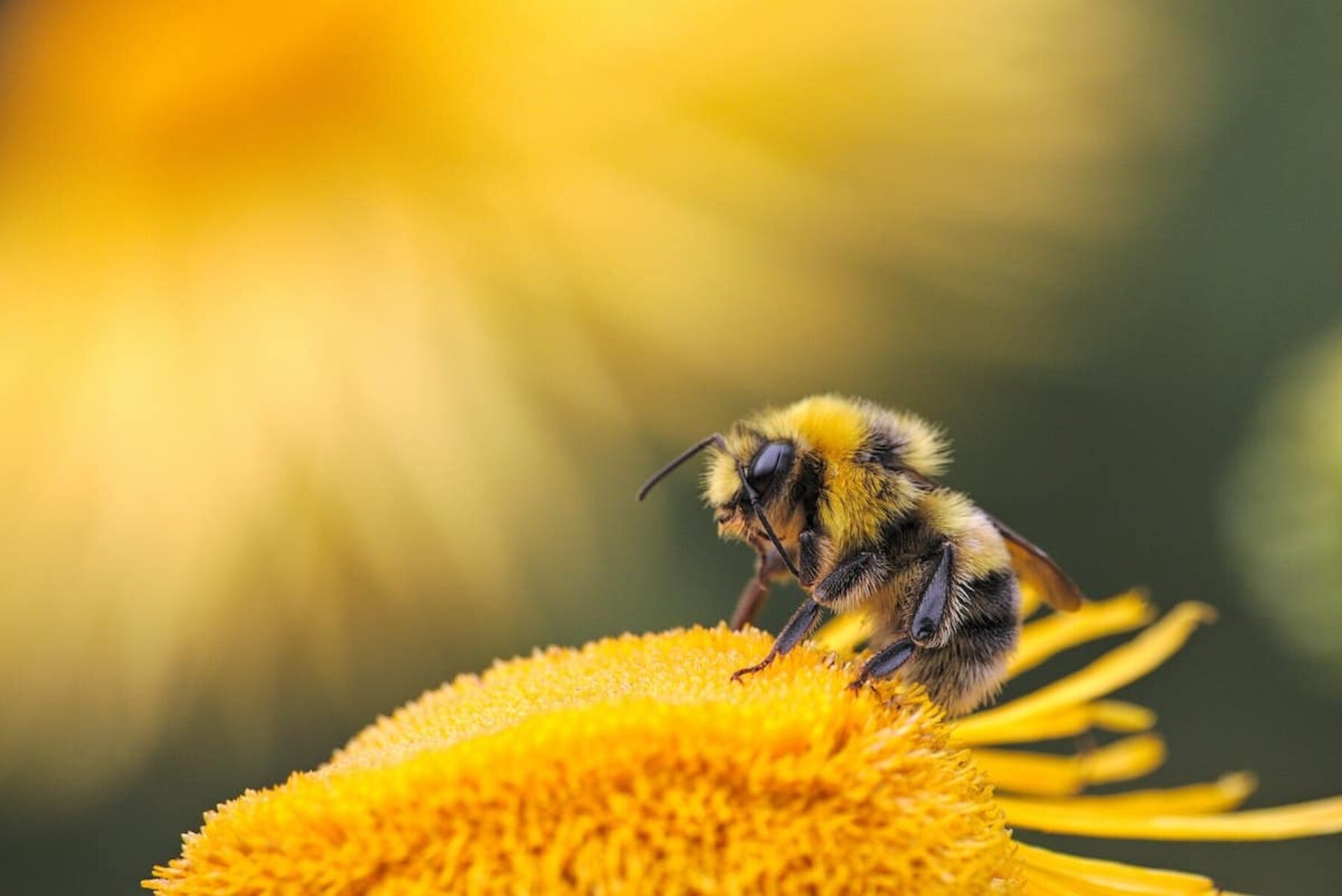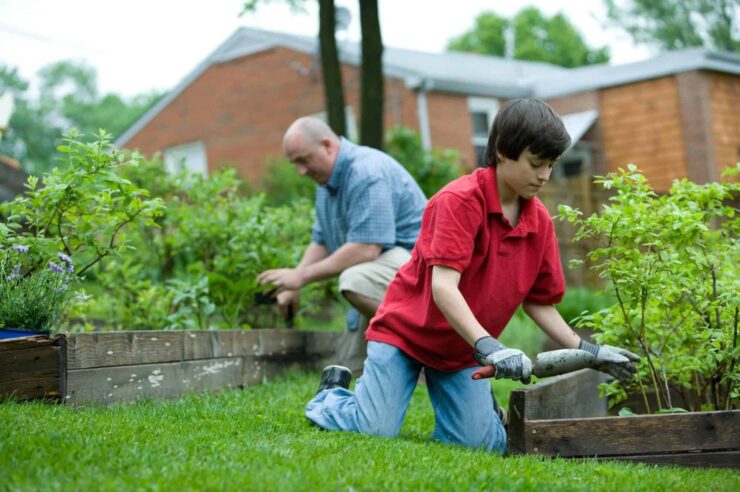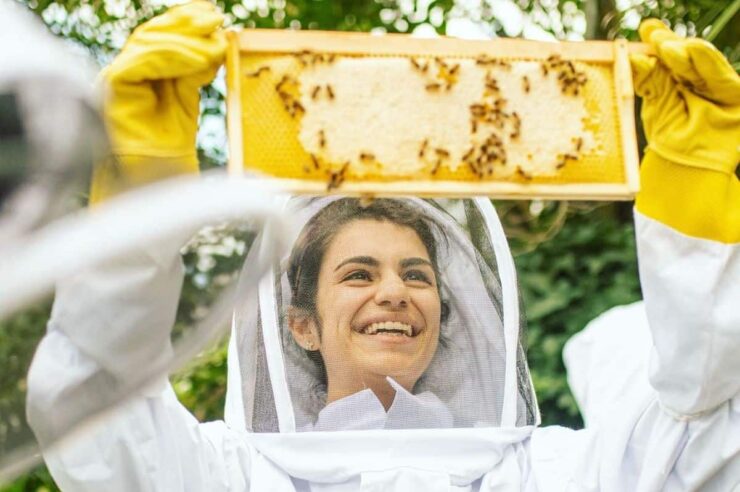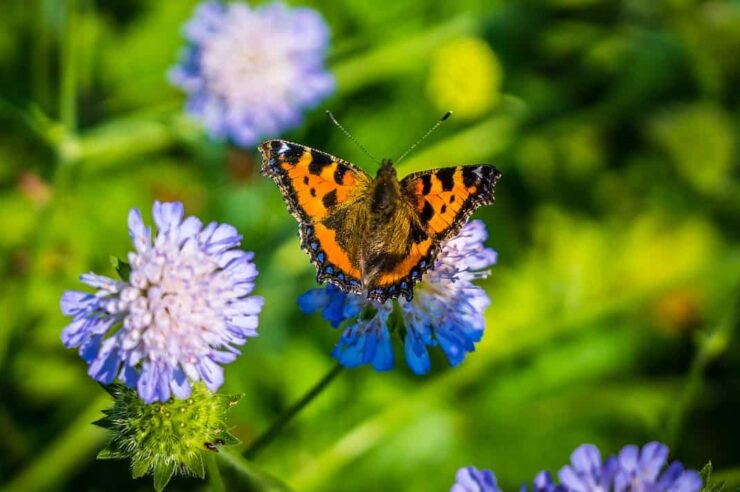From bee-friendly bus stops to rewilding schemes in Africa, these projects are making a difference to our beloved pollinators on their annual day of recognition
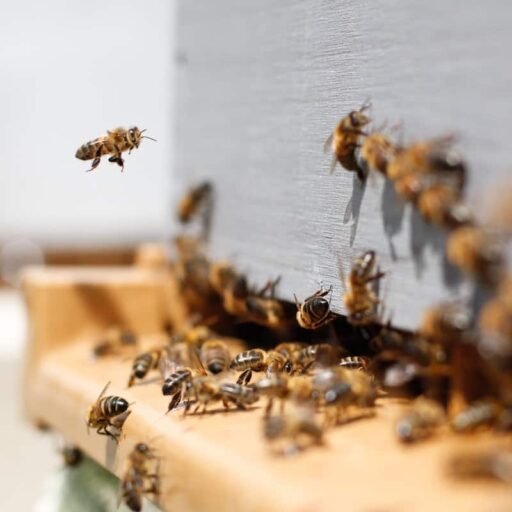
An international grid of remotely-monitored hives is using artificial intelligence (AI) and cloud computing to analyse the health of global bee populations, and engineer lasting solutions to reverse their decline.
Pesticides, habitat loss and climate change are some of the reasons behind shrinking populations of vital pollinators.
Beekeepers have long used commercial hive sensors to track the health of individual colonies, but the World Hive Network has gone one step further by creating a ‘hive mind’, in the truest sense of the word. It links 2.5bn bees in 50,000 hives to data-crunching software. Sensors in each hive measure a range of variables including weight, temperature, humidity, sound and ambient weather.
The network is an initiative of the The World Bee Project CIC, launched eight years ago by social entrepreneur Sabiha Malik, with the aim of using AI to help address pollinator and biodiversity decline, food insecurity and climate change.
“Bees lie at the heart of the relationships that bind the natural and human worlds, and in safeguarding bees lies the means to safeguard life itself,” says The World Bee Project.
Image: Damien Tupinier
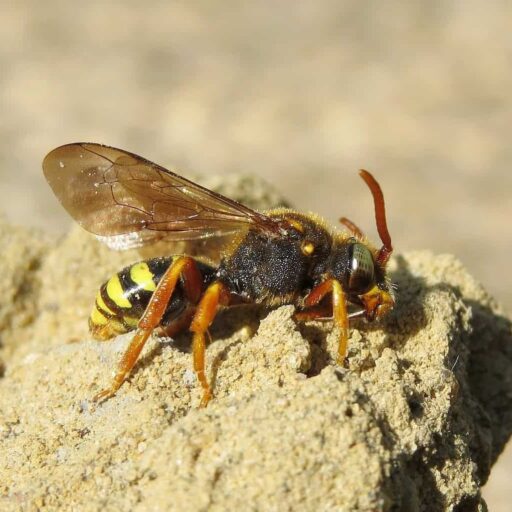
The South Devon Area of Outstanding Natural Beauty is throwing a lifeline to some of the UK’s most threatened invertebrates – including the UK’s rarest bee – with its multi-partner Life on the Edge project.
Still at development stage, the scheme will be bidding for £4m of Lottery funding by trialling habitat recovery initiatives in partnership with the charity Buglife, the National Trust and the Torbay Coast and Countryside Trust.
It aims to revive rare insect species on the south Devon coast between Berry Head and Wembury. They include the six-banded nomad bee (pictured) and the long-horned bee, as well as the short-necked oil beetle.
The six-banded nomad is the rarest bee in the UK and clings to a precarious existence on Devon’s coastal cliffs, where it ‘cuckoos’ the long-horned bee by laying eggs in its nests.
The project was awarded a £221,900 development grant from the National Lottery Heritage Fund in January.
Image: Life on the Edge
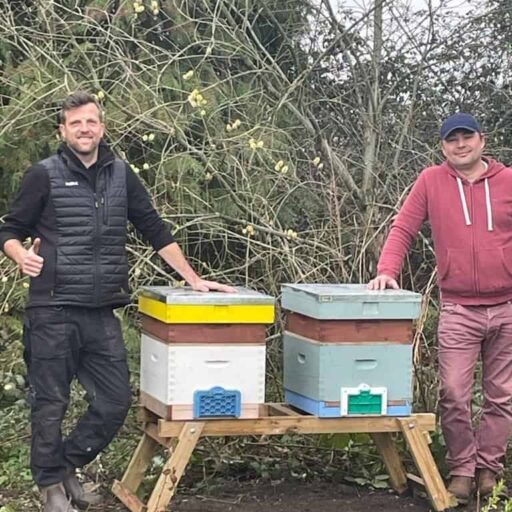
Poole-based Community Interest Company (CIC) Bee Mission plans to set up 500 new hives across Dorset and Hampshire by finding ‘foster homes’ for colonies on country fields, urban gardens and terraces.
The CIC not only covers set up costs but also sends visiting beekeepers to tend the hives. Alternatively, hosts can learn beekeeping skills themselves courtesy of Bee Mission’s training programme. Either way, they earn a share of the honey or a slice of the profits from its sale.
Founder Chris Bialan trialled the idea two years ago with five hives in the grounds of a nursing home in Fordingbridge, Hampshire, a small town near the New Forest.
Addressing concerns that honeybees are depriving wild pollinators of pollen, Bialan also plans to plant wild meadow flowers, while encouraging his hive hosts to do the same.
Bee Mission’s goal goes beyond reviving dwindling honeybee numbers. Its training scheme provides skills and work opportunities for homeless people living in Bournemouth.
Image: Bee Mission
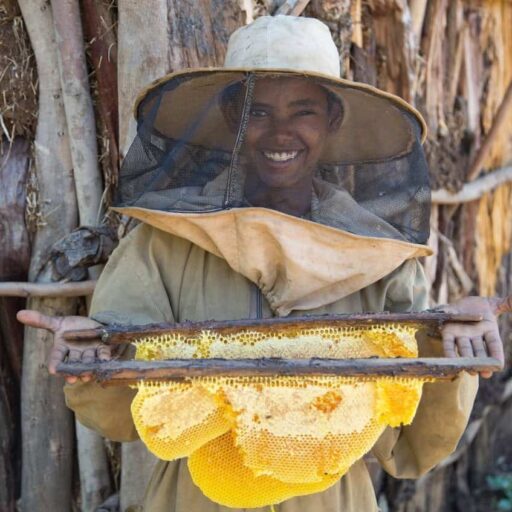
Land degraded by overgrazing, tree felling and climate change around Lake Tana in Ethiopia is the target of a restoration project helmed by UK charity Bees for Development (BFD), in partnership with honey brand Rowse.
Locals have planted a ‘living fence’ of trees as well as thousands of seedlings, transforming previously scorched, barren tracts of land into lush, green habitat perfect for honeybees.
BFD has also provided training for ‘community-based beekeeper mentors’, who support 450 beekeepers in five villages around Lake Tana. The initiative aims to develop business opportunities for landless workers in a region where Covid-19 has exacerbated unemployment.
Following the pandemic, the price of honey is said to be on the rise in Ethiopia, where it is prized for its medicinal value and for boosting the immune system.
BFD founder Nicola Bradbear said: “It’s a wonderful solution and a wonderful way to help people in dire situations.”
Image: Bees For Development

Meanwhile in Kenya, conservation charity Happy Community Organization is encouraging girls and young women to take up beekeeping. Founded in 2019 by then 25-year-old James Njuguna Wangunyu, it has installed over 500 hives in the greater Amboseli ecosystem – home to the Masaai – and aims for 20,000 by 2030.
For some households, selling honey, wax and other bee products is providing an income for the first time in their lives.
As well as creating sustainable employment for thousands of women and their communities, the charity’s Adopt a Hive initiative aims to safeguard or rewild almost 2,000 square miles of land while planting 10m indigenous trees in a region where wildlife habitats have been devastated by agriculture and charcoal burning.
A portion of proceeds from honey sales goes to its scholarship education programme.
Image: Ian Macharia
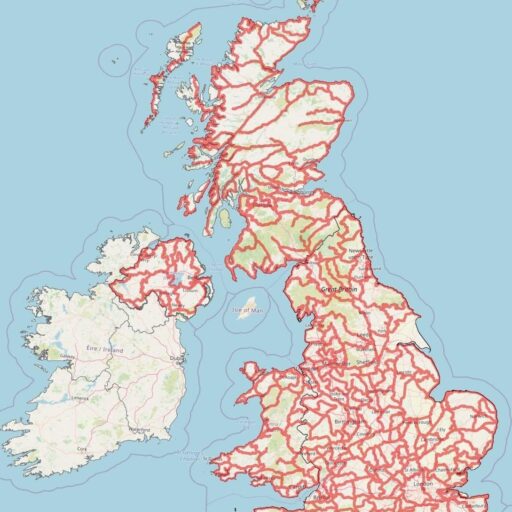
Roads and railways have made it easy for people to travel around the UK, but have had the precisely opposite effect for insects. Transport infrastructure has fragmented insect habitats, leaving many pollinators marooned on shrinking islands of biodiversity.
A conservation project aims to address that by creating a network of wildflower superhighways across the UK. Ten years in the making, the B-Lines initiative was launched in March 2021 by the insect charity Buglife.
Buglife has spent a decade planning potential routes for the insect highways. The resulting map (pictured), looks like something the AA might have produced. But rather than roads, the red lines highlight proposed wildflower corridors that will join the dots between fragmented insect habitats.
According to Buglife’s Paul Hetherington, 3,326ha of work has now been completed across the B-Lines network, a doubling in just 15 months. “This has come off the back of great publicity around completing the B-Lines map,” he says, adding that an ever-increasing range of funders are coming forward to help expand the network.
Image: Buglife
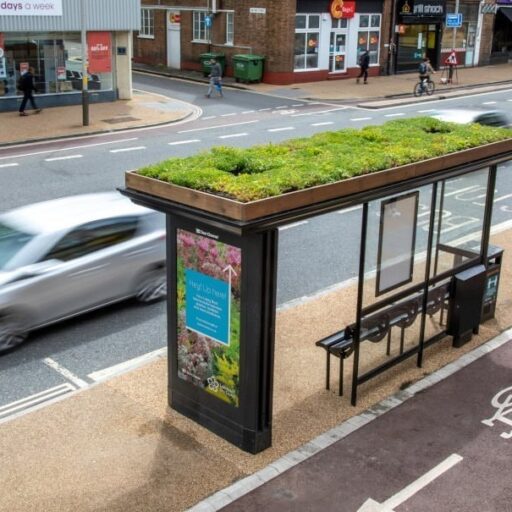
A new five year partnership between The Wildlife Trusts and media and infrastructure company Clear Channel is set to transform bus stops across the UK.
With the aim of creating urban areas that are more welcoming to animals and insects, forty green-roofed bus stops are already in place, from Glasgow to Brighton. By the end of 2022, Clear Channel aims to have installed 150.
It’s one of several large-scale projects working to green up urban and high-traffic areas. National Highways, which manages England’s motorways and major A-roads, has awarded £6m to The Wildlife Trusts to improve biodiversity around roadways.
The body previously committed to creating wildflower-rich meadows along verges as standard, on all new major schemes in England – a boon for bees, butterflies and wildlife.
Image: The Wildlife Trusts
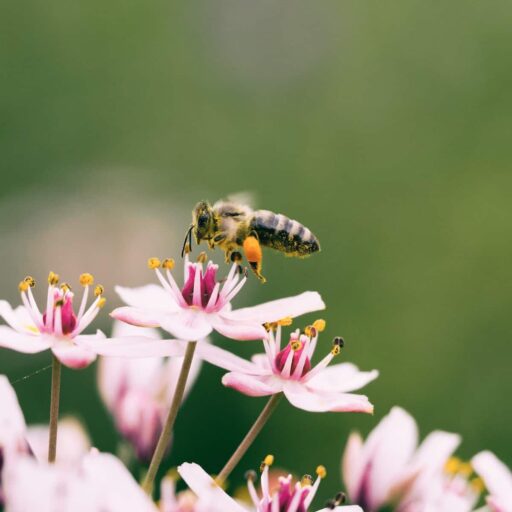
The Bumblebee Conservation Trust hosts a free online resource to help people grow flowers that benefit bees and other pollinators.
The Bee Kind website assists people in choosing the best plants for pollinators in their gardens, window boxes or community spaces.
The tool was launched to try and arrest the alarming declines reported among pollinators.
Image: Aaron Burden
Main image: Dmitry Grigoriev
